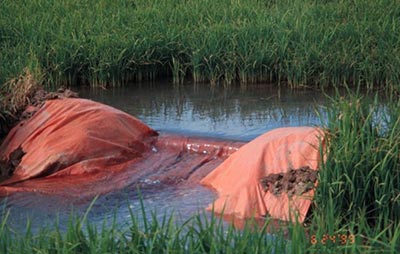Rice is the main source of carbohydrates for people around the world. Little processing is required to prepare rice for cooking, and harvested rice grain can be dehulled to make brown rice or milled to make white rice.

In Missouri, most rice is grown in flooded fields. Farmers grade fields to provide a uniform slope, then plant rice seeds in dry soil that is flooded when seedlings reach the first tiller growth stage. Levees are constructed and gates installed to maintain floodwater depths of 2 to 4 inches.
Recently, many farmers have become interested in growing rice with furrow irrigation. The main advantage of furrow versus flood irrigation is that levees and gates are not required — saving time and labor. Yields per acre with furrow irrigation rice are sometimes a little lower, but the land that would been used for levees is in production.
The University of Missouri has been conducting furrow rice field research for several years with funding from the Missouri Rice Research and Merchandising Council. To learn more about growing rice with furrow irrigation, read “Arkansas Furrow-Irrigated Rice Handbook.”